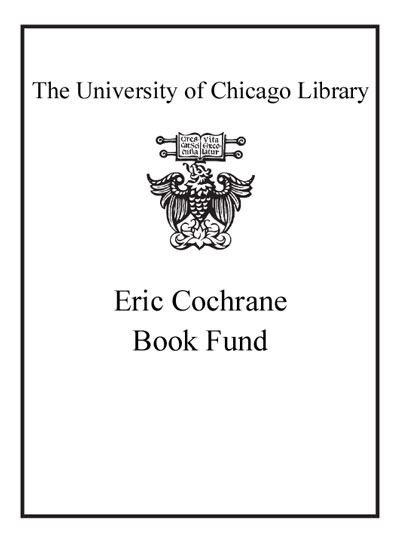Cut in alabaster : a material of sculpture and its European traditions 1330-1530 /
Saved in:
| Author / Creator: | Woods, Kim, author. |
|---|---|
| Imprint: | London : Harvey Miller Publishers, an imprint of Brepols Publishers, [2018] ©2018 |
| Description: | 418 pages : illustrations (chiefly color) ; 29 x 23 cm. |
| Language: | English |
| Series: | Distinguished contributions to the study of the arts in the Burgundian Netherlands ; volume 3 Distinguished contributions to the study of the arts in the Burgundian Netherlands ; v. 3. |
| Subject: | |
| Format: | Print Book |
| URL for this record: | http://pi.lib.uchicago.edu/1001/cat/bib/11871631 |
MARC
| LEADER | 00000cam a2200000Ii 4500 | ||
|---|---|---|---|
| 001 | 11871631 | ||
| 005 | 20190501143258.7 | ||
| 008 | 150430t20182018enka b 001 0 eng d | ||
| 003 | ICU | ||
| 040 | |a ERASA |b eng |e rda |c ERASA |d OCLCO |d YDXCP |d BTCTA |d OCLCQ |d GRU |d CHVBK |d OCLCO |d QGK |d UPM |d JPG |d OCLCF |d CNNGC |d AUXAM |d HLS |d YDXIT | ||
| 019 | |a 909318453 | ||
| 020 | |a 9781909400269 |q hardcover | ||
| 020 | |a 1909400262 |q hardcover | ||
| 035 | |a (OCoLC)908334797 |z (OCoLC)909318453 | ||
| 050 | 4 | |a NB1210.A4 |b W66 2018 | |
| 082 | 0 | 4 | |a 730 |
| 090 | |a NB1210.A4 |b W66 2018 |p f | ||
| 100 | 1 | |a Woods, Kim, |e author. |0 http://id.loc.gov/authorities/names/n98039615 | |
| 245 | 1 | 0 | |a Cut in alabaster : |b a material of sculpture and its European traditions 1330-1530 / |c Kim Woods. |
| 264 | 1 | |a London : |b Harvey Miller Publishers, an imprint of Brepols Publishers, |c [2018] | |
| 264 | 4 | |c ©2018 | |
| 300 | |a 418 pages : |b illustrations (chiefly color) ; |c 29 x 23 cm. | ||
| 336 | |a text |b txt |2 rdacontent |0 http://id.loc.gov/vocabulary/contentTypes/txt | ||
| 337 | |a unmediated |b n |2 rdamedia |0 http://id.loc.gov/vocabulary/mediaTypes/n | ||
| 338 | |a volume |b nc |2 rdacarrier |0 http://id.loc.gov/vocabulary/carriers/nc | ||
| 490 | 1 | |a Distinguished contributions to the study of the arts in the Burgundian Netherlands ; |v volume 3 | |
| 504 | |a Includes bibliographical references and index. | ||
| 520 | 8 | |a 'Cut in Alabaster' is the first comprehensive study of alabaster sculpture in Western Europe during the late Middle Ages and Renaissance. While marble is associated with Renaissance Italy, alabaster was the material commonly used elsewhere in Europe and has its own properties, traditions and meanings. It enjoyed particular popularity as a sculptural material during the two centuries 1330-1530, when alabaster sculpture was produced both for indigenous consumption and for export. Focussing especially on England, the Burgundian Netherlands and Spain, three territories closely linked through trade routes, diplomacy and cultural exchange, this book explores and compares the material practice and visual culture of alabaster sculpture in late medieval Europe. 'Cut in Alabaster' charts sculpture from quarry to contexts of use, exploring practitioners, markets and functions as well as issues of consumption, display and material meanings. It provides detailed examination of tombs, altarpieces and both elite and popular sculpture, ranging from high status bespoke commissions to small, low-cost carvings produced commercially for a more popular clientele. | |
| 650 | 0 | |a Alabaster sculpture, English. |0 http://id.loc.gov/authorities/subjects/sh85003110 | |
| 650 | 7 | |a Alabaster |2 gnd | |
| 650 | 7 | |a Kunsthandwerk |2 gnd | |
| 650 | 7 | |a Plastik |2 gnd | |
| 650 | 7 | |a Alabaster sculpture, English. |2 fast |0 http://id.worldcat.org/fast/fst00804033 | |
| 650 | 6 | |a Sculpture en albâtre anglaise. | |
| 830 | 0 | |a Distinguished contributions to the study of the arts in the Burgundian Netherlands ; |v v. 3. |0 http://id.loc.gov/authorities/names/no2014032857 | |
| 903 | |a HeVa | ||
| 929 | |a cat | ||
| 999 | |n 514-0 |c JRL |r 170 | ||
| 999 | f | f | |i ac58f9cb-861d-5e8d-8d5d-35adc1b25601 |s b0cc8838-4686-599a-bb06-82dfdb314286 |
| 928 | |t Library of Congress classification |a NB1210.A4 W66 2018 |l JRL |c JRL-Gen |i 11338631 | ||
| 927 | |t Library of Congress classification |a NB1210.A4 W66 2018 |l JRL |c JRL-Gen |e COCR |b 116363297 |i 10112362 | ||

